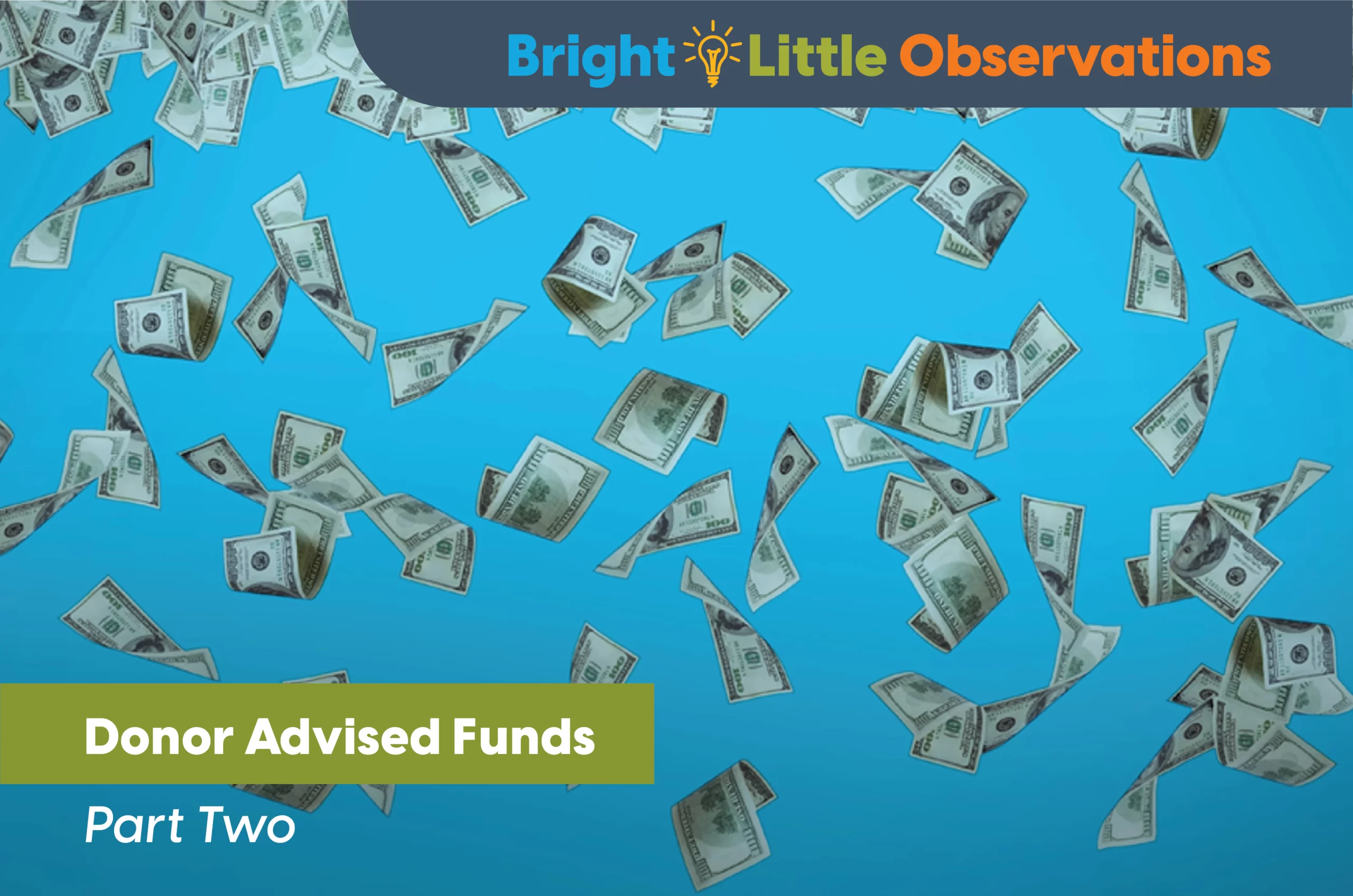


Unlocking the DAF vault: the right combination
“While DAFs certainly present their own set of challenges to charities and nonprofits, there’s no disputing the fact that they’re a valuable source of funding,” says Summit Marketing’s Senior Strategic Communications Director, Tammy Nigus. “Our responsibility is to help our client partners to apply the right combination of strategic fundraising practices to aid donors in directing their monthly, quarterly and annual donations as well as their specific DAF dollars to the causes they are most passionate about throughout their community.”
The Right Combination
1. Know your audience… and speak to them appropriately
Although you may not yet know your DAF donors by name, you may be familiar with them through ways in which they are already partnering with your organization: gala attendees, board members, staff, sustaining donors and even volunteers. According to Fidelity Charitable, 74% of grants in 2019 went to a charity that the donor had previously supported.
While the number of donors who establish DAFs in their 20s or 30s is growing, most donors create a giving account in their 50s as they approach retirement and have more time and resources available. And remember DAFs aren’t just for the ultra-high net worth donor anymore. For example, more than half of Fidelity Charitable account balances are less than $25,000. And some financial investment firms allow a donor to open an account with no minimum contribution.
According to Fidelity Charitable, The Salvation Army is the 2nd most popular organization for DAFs. This means donors are already using their DAFs to give to The Salvation Army.
Donors and Volunteers who have DAFs and can potentially make a grant to your organization
Show gratitude for what their financial support and/or partnership has accomplished so far and encourage them to utilize the features of their DAF to make an even greater or ongoing impact: pre-schedule an additional grant or set-up a recurring grant. You also want to ask them to name you as the successor on their account.
Don’t forget your volunteers!
Fidelity Charitable reports that 79% of their account holders are also volunteers.
Donors and Volunteers with the potential to create a DAF
Because volunteers and donors already have a relationship with your organization, your communication with them should center around how they can continue to do the most good in their communities and, at the same time, realize significant tax benefits. You may need to educate them on the advantages of creating a DAF and how they work. Then you can encourage them to either set-up an account in your Fund.
Prospective new donors to your organization
Your acquisition communication is very similar to the previous groups of donors and volunteers. Your message must be even more compelling as to why prospects should choose to support your nonprofit in the first place. Ask them to join in your vision for the future. Translate immediate, short-term needs into long-term, community-based goals. Paint a vivid picture of your plans moving forward and how they can be part of it by creating a DAF and granting from it.
Lapsed DAF grantors
If a DAF donor has made a grant to your organization before, they have potential to do it again. Periodically run a report to identify past DAF donors who have not made an additional grant within the last 12 months. Then use this report to create a follow up opportunity to build and strengthen your relationship with these valuable partners. Recruit a qualified member of your board or executive staff to place a personal call to them, learn about their passion for your organization’s vision and mission and let them know about the giving and granting options available to them.
Here are a few recommended key message points for communicating with your donors about setting up and designating DAF gifts:
- DAFs are simple and easy to establish
- Minimum balance to establish an account is low
- Emphasize tax and money management benefits
- Gifts of appreciated securities can offset capital gains taxes
- Donors can designate to specific programs they want to help
- DAFs can be used to tithe
- Matching opportunities and other strategies can be created to maximize giving
2. Make it Easy for your donors to give through DAFs
Once a donor decides to make a grant to your nonprofit from their DAF, enabling the donor to find your organization when searching within the sponsor account is vitally important. Be sure to highlight the ability to donate via DAF accounts on your website. We highly recommend making it a strong standout and when donors or prospects click on the DAF section or button/banner on your website, include your legal name, Tax-ID and EIN numbers, 501c3 status and your 990 on your website. Your legal name and 990 must match for your fund to be found.
For example, if your organization is commonly known as “Recue the Children,” but the legal name is Rescue the Children from Hunger LLC, the donor probably won’t be able to find you in the funds automated look up.
Also, consider including DAF widget or direct links to the top five to 10 fund sponsors your donors are currently using. Make granting convenient for donors by allowing them to reach their fund sponsor with just one click.
Five preferred DAF financial investment firms:
BNY Mellon Charitable Gift Fund
Fidelity Charitable
National Philanthropic Trust
Schwab Charitable Fund
Vanguard Charitable Endowment
In Part 3 of our blog, we’ll share the final three fundraising principles for “unlocking the DAF vault” and securing more DAF grants to your organization.
Stay tuned!
